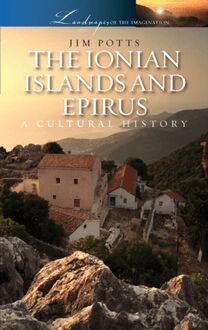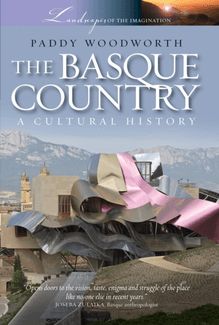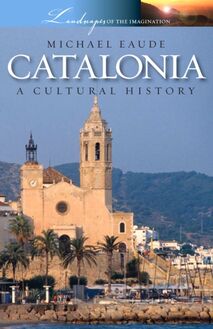-
 Univers
Univers
-
 Ebooks
Ebooks
-
 Livres audio
Livres audio
-
 Presse
Presse
-
 Podcasts
Podcasts
-
 BD
BD
-
 Documents
Documents
-
- Cours
- Révisions
- Ressources pédagogiques
- Sciences de l’éducation
- Manuels scolaires
- Langues
- Travaux de classe
- Annales de BEP
- Etudes supérieures
- Maternelle et primaire
- Fiches de lecture
- Orientation scolaire
- Méthodologie
- Corrigés de devoir
- Annales d’examens et concours
- Annales du bac
- Annales du brevet
- Rapports de stage
La lecture à portée de main
Vous pourrez modifier la taille du texte de cet ouvrage
Découvre YouScribe en t'inscrivant gratuitement
Je m'inscrisDécouvre YouScribe en t'inscrivant gratuitement
Je m'inscrisEn savoir plus
Vous pourrez modifier la taille du texte de cet ouvrage
En savoir plus

Description
Sujets
Informations
| Publié par | Andrews UK |
| Date de parution | 09 août 2016 |
| Nombre de lectures | 0 |
| EAN13 | 9781908493347 |
| Langue | English |
| Poids de l'ouvrage | 1 Mo |
Informations légales : prix de location à la page 0,0450€. Cette information est donnée uniquement à titre indicatif conformément à la législation en vigueur.
Extrait
PATAGONIA
A Cultural History
Chris Moss
First published in 2008 by
Signal Books Limited
36 Minster Road
Oxford OX4 1LY
www.signalbooks.co.uk
This digital edition converted and distributed in 2016 by
Andrews UK Limited
www.andrewsuk.com
© Chris Moss, 2008, 2016
the right of Chris Moss to be identified as the author of this work has been asserted by him in accordance with the Copyright, Design and Patents Act, 1988.
All rights reserved. The whole of this work, including all text and illustrations, is protected by copyright. No parts of this work may be loaded, stored, manipulated, reproduced or transmitted in any form or by any means, electronic or mechanical, including photocopying and recording, or by any information, storage and retrieval system without prior written permission from the publisher, on behalf of the copyright owner.
The views and opinions expressed herein belong to the author and do not necessarily reflect the views of Signal Books or Andrews UK Limited.
Cover Design: Baseline Arts
Cover Images: South American Pictures/Kathy Jarvis
Image Credits
p.xv John Snelgrove/istockphoto
p.34 Arne haysen/istockphoto
p.40 Hans Schachtschabel/istockphoto
p.47 Alejandro Soto/istockphoto
p.54 Alexander Hafemann/istockphoto
p.65 Maria Veras/istockphoto
p.73 Marcelo Silva/istockphoto
p.79 Bruce Block/istockphoto
p.212 Max-Steven Grossman/istockphoto
p.222 Eva Ritchie/istockphoto
p.282 Laura Gugliermetti/istockphoto; Walter Spina/istockphoto.
All others images: Chris Moss, Archivo General de la Nación and Archivo Roil
Preface
I first went to Patagonia as a tourist. After moving to Buenos Aires in 1991 I soon felt a need to escape from it. Not that the city wasn’t a wonderful place to live; it was dynamic, surprising, fascinatingly damaged. But it was also full of the usual urban clutter - cars, fumes, crowds, more cars - and there was no space to think.
I made my first getaway by flying to San Carlos de Bariloche, the ersatz Alpine town that sits beside Lake Nahuel Huapi’s huge blue eye. I wasn’t overly impressed by the Saint Bernard dogs or the local chocolate, but the air was bracing, rhythms were slow, and on the scruffy edge of the town I spied the beginning of Patagonia’s monotonous steppe. This was space in abundance. Space and, it seemed, nothing else.
Subsequent journeys took me to rain-drenched Chiloé and the Chilean fjords, lonely Ushuaia shivering on the north bank of the Beagle Channel, and the stranded ports of Deseado and San Julián. The rail network was still alive in the 1990s and I took a diesel train down to Ingeniero Jacobacci to jump on La Trochita to Esquel, with rheas skipping across the line faster than the steam engine could chug along it. These overland trips tried my patience, as did the incessant westerlies, but they meant I saw the less obvious hubs and junctions: oil-capital Comodoro Rivadavia, convivial Viedma, the forlorn coal-mining town of Río Turbio. I always took a tent. I always made friends.
So there was “my” Patagonia: big skies, few people, camping under the Southern Cross, and learning to wait.
There were no dedicated guidebooks to Patagonia, and the chapters on the region in guides to Chile and Argentina were brief and all about getting in and out of towns and seeing the occasional museum.
Like most innocent backpackers, I was exposed to Bruce Chatwin early on. A copy of In Patagonia was as de rigueur in the 1990s as it is now and, while I found the book’s elliptical structure and condescending tone irritating, I was impressed by the deftness with which Chatwin wove together dozens of storylines and with the range of the travelogue’s source material. When I took up a few of his leads and began to delve, I discovered that my favourite empty space was crammed with literature.
I was intrigued by the fact that the book did not reflect in any way the country I was learning to love. It was not only that I spoke Spanish and so could engage with the “Patagonians” Chatwin had set out to caricature. There were other gaps. He had no time for the flora and fauna, for indigenous traditions, or for Argentinian and Chilean experiences of Patagonia. Those who live in Buenos Aires, Santiago de Chile, Cordoba and the other cramped cities of the temperate zone cherish a notion of the sur that is nothing like the myths Europeans spin about Patagonia. In place of Darwin and FitzRoy, Drake and Saint Exupéry, they have local heroes - Francisco Moreno, General Roca, W. H. Hudson - and instead of travel books and guidebooks that draw on a treasure trove of narratives written by past adventurers, they prefer to indulge in newly conceived films and fictions. Argentinians and Chileans live in Patagonia, they labour there and die there. They plant vineyards and raise children; they form hippie colonies and are sent to naval bases. Mapuches fight with governments over land rights; fifth-generation Welsh children try to learn the language of their pioneering forebears. For Chatwin and almost all visitors, Patagonia was “material” to be digested and reworked; for anyone born or living there, it is home.
There is also a glow in the Patagonian sky. The most inspired writers always discover something sublime down there and note, humbled, that it derives from some unnameable quality about the landscape. When you travel overland from east to west, at some point the Andes begin to emerge beyond the ochre grasslands. I have made that journey from Río Gallegos, from Playa Unión, and from Carmen de Patagones, and it has always been a revelation. Despite the richness and variety of the literature, nothing ever equals the experience of seeing such natural beauty. Many writers have seized upon the crude poetics of desolation, but in doing so perhaps they have missed the grandeur and exuberant beauty of Patagonia.
In his tango “Vuelvo al Sur”, the writer Pino Solanas is thinking of the southside of Buenos Aires: the older, wiser, crumbling part of the city. But the longing felt in the song applies equally to the constant pull of Patagonia. Returning and returning again and again to Patagonia, both physically and through all the books that I had to open to research this book, has been a pleasurable journey. If I have learned that even the desert is never as barren as it first appears, I have also realized that Patagonia’s human imprint is as marvellous as its wildernesses.
Yet Patagonia is changing. The “Uttermost Part of the Earth” is now only a fifteen-hour flight away from London or New York. Roads are paved, chic restaurants have opened, and many estancias have been given the boutique makeover. Even thirty years ago southern South America was an out-there destination; now it is a standard finale to many a gap-year adventure.
We have become familiar with the region thanks to tourism and the power of hard currency. But paths to Patagonia were first opened by the texts that ill this book, all written by individuals who travelled there with causes they considered far nobler than tourism.
Some people pay lip service to the idea that once a place is discovered its mysteries wilt and die. Even so, tourism is better than many of the other alternatives that are available to Patagonia. Some would like to use this scarcely populated triangle as a vast dump for countries that have no room for their own waste. Others would fence it all off and sell it to expatriate millionaires. Criollo traditionalists, many of them non-resident, would farm it till the land was completely reduced to desert and then dig it all up and drill holes in it. Geographers, soldiers, dreamers, ethnographers, fossil-hunters, fortune-hunter, writers and photographers have all had their time in Patagonia, say the futurists, and now the land has to pay.
Perhaps tourism is just the latest, rather benign phase in Patagonia’s history as a zone of pointless pursuits - a place for idling, daydreaming, walking and wonder. Having got lost for a time in the Patagonian library, I am looking forward more than ever to being back in the region with nothing more on my mind than the unfolding day and the cold, clear night.
Acknowledgements
Writing this kind of book is a fairly solitary act, but I have had help and support from friends and family, as well as newspaper and magazine editors. Since returning to London in 2001, I have revisited certain corners of Patagonia and found new ones, and the trips have served to remind me that it is the landscape that first stirred my imagination - and that the writings, however wonderful and beguiling, came second. For allowing me to write stories for them I would like to thank the editors at Condé Nast Traveller and Wanderlust magazines and the travel desks of the Daily Telegraph, the Independent and the Guardian. Writing and editing for Time Out guides permitted me to explore less obvious destinations while hunting down bus timetables, boat services and B&Bs. Also, warm thanks to Dafydd Tudur at Glaniad and Marcela Plust in Los Mimbres in Gaiman for help on the Welsh chapter and to the culture and tourism departments of Rawson, Trelew and Trevelin.
Thanks to Peter Hulme and Tomas Eloy Martinez for advice and suggestions. Ian Barnett in Buenos Aires helped with translations and Matt Chesterton and my wife Carolina Gryngarten read through the first drafts. The staff in the Science and Rare Books reading rooms at the British Library were helpful. Thanks to James Ferguson at Signal for his patient encouragement. As for the London-based burglars who stole the first draft of this book I only hope some ancient Tehuelche curse plunges them into an abyss of ice and fire.
Chris Moss
November 2007
Trevelin, Chubut province
-
 Univers
Univers
-
 Ebooks
Ebooks
-
 Livres audio
Livres audio
-
 Presse
Presse
-
 Podcasts
Podcasts
-
 BD
BD
-
 Documents
Documents
-
Jeunesse
-
Littérature
-
Ressources professionnelles
-
Santé et bien-être
-
Savoirs
-
Education
-
Loisirs et hobbies
-
Art, musique et cinéma
-
Actualité et débat de société
-
Jeunesse
-
Littérature
-
Ressources professionnelles
-
Santé et bien-être
-
Savoirs
-
Education
-
Loisirs et hobbies
-
Art, musique et cinéma
-
Actualité et débat de société
-
Actualités
-
Lifestyle
-
Presse jeunesse
-
Presse professionnelle
-
Pratique
-
Presse sportive
-
Presse internationale
-
Culture & Médias
-
Action et Aventures
-
Science-fiction et Fantasy
-
Société
-
Jeunesse
-
Littérature
-
Ressources professionnelles
-
Santé et bien-être
-
Savoirs
-
Education
-
Loisirs et hobbies
-
Art, musique et cinéma
-
Actualité et débat de société
- Cours
- Révisions
- Ressources pédagogiques
- Sciences de l’éducation
- Manuels scolaires
- Langues
- Travaux de classe
- Annales de BEP
- Etudes supérieures
- Maternelle et primaire
- Fiches de lecture
- Orientation scolaire
- Méthodologie
- Corrigés de devoir
- Annales d’examens et concours
- Annales du bac
- Annales du brevet
- Rapports de stage












